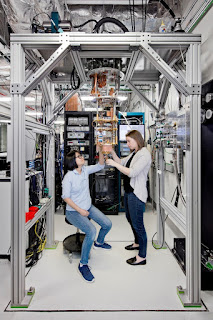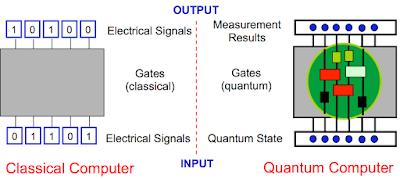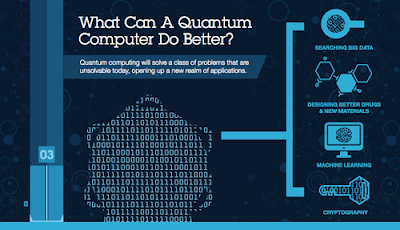Twitter Feed
My views on “Classification of Cloud Computing Stakeholders”
In “Cloudy Times”, Markus Klems is having a good discussion on how cloud computing stakeholders classify the various infrastructure options. I then thought that it would be good for me…
Personal Views on DISA, HP and RACE
DISA and HP are clearly on the path towards cloud computing. At it’s core, net-centric operations requires the effective delivery of information to forward forces and the translation of that…
DISA selects HP for RACE
Byte and Switch reported today that the Department of Defense (DoD) has confirmed that HP will help the Defense Information Systems Agency (DISA) deploy a major cloud computing infrastructure. Grid…
Speakers for First SOA-R Event Announced
Scheduled speakers and topics for the first SOA-R Cloud Computing Education event are: Steve Armentrout, Parabon, President & CEO Grid to Cloud Computing Greg Boss, IBM, Lead Cloud Solution Architect…
Cloud Computing Offerings – A Taxonomy
From “The various level of cloud computing” by Ross Cooney Applications in the cloud: Software as a Service (SaaS). Examples include gmail, yahoo mail, Hotmail, the various search engines, wikipedia,…
Cloud Computing Guides (updated 8/10/08)
InfoWorld Special Report on Cloud Computing InformationWeek Guide to Cloud Computing InfoWorld Cloud Computing Strategy Guide Cloud Computing Product Guide A Brief History of Cloud Computing Business Week CEO Guide…
Microsoft announcing Cloud Computing offering
According to Information Week, Microsoft plans to make three important business software offerings — Exchange, Office Communications, and SharePoint — available in SaaS versions for business this year, but it’s…
Intel new CIO to examine Cloud Computing
In a ComputerworldUK article, incoming Intel CIO Diane Bryant says that she will network with fellow information chiefs, examine cloud computing and advocate using the chip giant’s internal operations as…
Cloud Computing for National Security
As the national security community considers cloud computing as an IT infrastructure option, it is surely looking at the value of the cloud in an information sharing world. Implementation of…
- The release of a new API (Application Program Interface) for the IBM Quantum Experience that enables developers and programmers to begin building interfaces between its existing five quantum bit (qubit) cloud-based quantum computer and classical computers, without needing a deep background in quantum physics.
- The release of an upgraded simulator on the IBM Quantum Experience that can model circuits with up to 20 qubits. In the first half of 2017, IBM plans to release a full SDK (Software Development Kit) on the IBM Quantum Experience for users to build simple quantum applications and software programs.
The IBM Quantum Experience enables anyone to connect to IBM’s quantum processor via the IBM Cloud, to run algorithms and experiments, work with the individual quantum bits, and explore tutorials and simulations around what might be possible with quantum computing. Since its launch less than a year ago, about 40,000 users have run over 275,000 experiments on the IBM Quantum Experience. It has become an enablement tool for scientists in over 100 countries and, to date, 15 third-party research papers have been posted to arXiv with five published in leading journals based on experiments run on the Quantum Experience.
 The broad availability of quantum computing capability could prove to be a significant blow to current data encryption practices. In 2015 the US National Security Agency actually advised US agencies and businesses to prepare for a time when the cryptography protecting virtually all e-mail, medical and financial records, and online transactions would be rendered obsolete by quantum computing. The US National Institute for Standards and Technology (NIST) is also running a competition to spur work on post-quantum algorithms.
The broad availability of quantum computing capability could prove to be a significant blow to current data encryption practices. In 2015 the US National Security Agency actually advised US agencies and businesses to prepare for a time when the cryptography protecting virtually all e-mail, medical and financial records, and online transactions would be rendered obsolete by quantum computing. The US National Institute for Standards and Technology (NIST) is also running a competition to spur work on post-quantum algorithms. - Drug and Materials Discovery: Untangling the complexity of molecular and chemical interactions leading to the discovery of new medicines and materials;
- Supply Chain & Logistics: Finding the optimal path across global systems of systems for ultra-efficient logistics and supply chains, such as optimizing fleet operations for deliveries during the holiday season;
- Financial Services: Finding new ways to model financial data and isolating key global risk factors to make better investments;
- Artificial Intelligence: Making facets of artificial intelligence such as machine learning much more powerful when data sets can be too big such as searching images or video; or
- Cloud Security: Making cloud computing more secure by using the laws of quantum physics to enhance private data safety.
This content is being syndicated through multiple channels. The opinions expressed are solely those of the author and do not represent the views of GovCloud Network, GovCloud Network Partners or any other corporation or organization.
( Thank you. If you enjoyed this article, get free updates by email or RSS – © Copyright Kevin L. Jackson 2017)
Cloud Computing
- CPUcoin Expands CPU/GPU Power Sharing with Cudo Ventures Enterprise Network Partnership
- CPUcoin Expands CPU/GPU Power Sharing with Cudo Ventures Enterprise Network Partnership
- Route1 Announces Q2 2019 Financial Results
- CPUcoin Expands CPU/GPU Power Sharing with Cudo Ventures Enterprise Network Partnership
- ChannelAdvisor to Present at the D.A. Davidson 18th Annual Technology Conference
Cybersecurity
- Route1 Announces Q2 2019 Financial Results
- FIRST US BANCSHARES, INC. DECLARES CASH DIVIDEND
- Business Continuity Management Planning Solution Market is Expected to Grow ~ US$ 1.6 Bn by the end of 2029 - PMR
- Atos delivers Quantum-Learning-as-a-Service to Xofia to enable artificial intelligence solutions
- New Ares IoT Botnet discovered on Android OS based Set-Top Boxes




